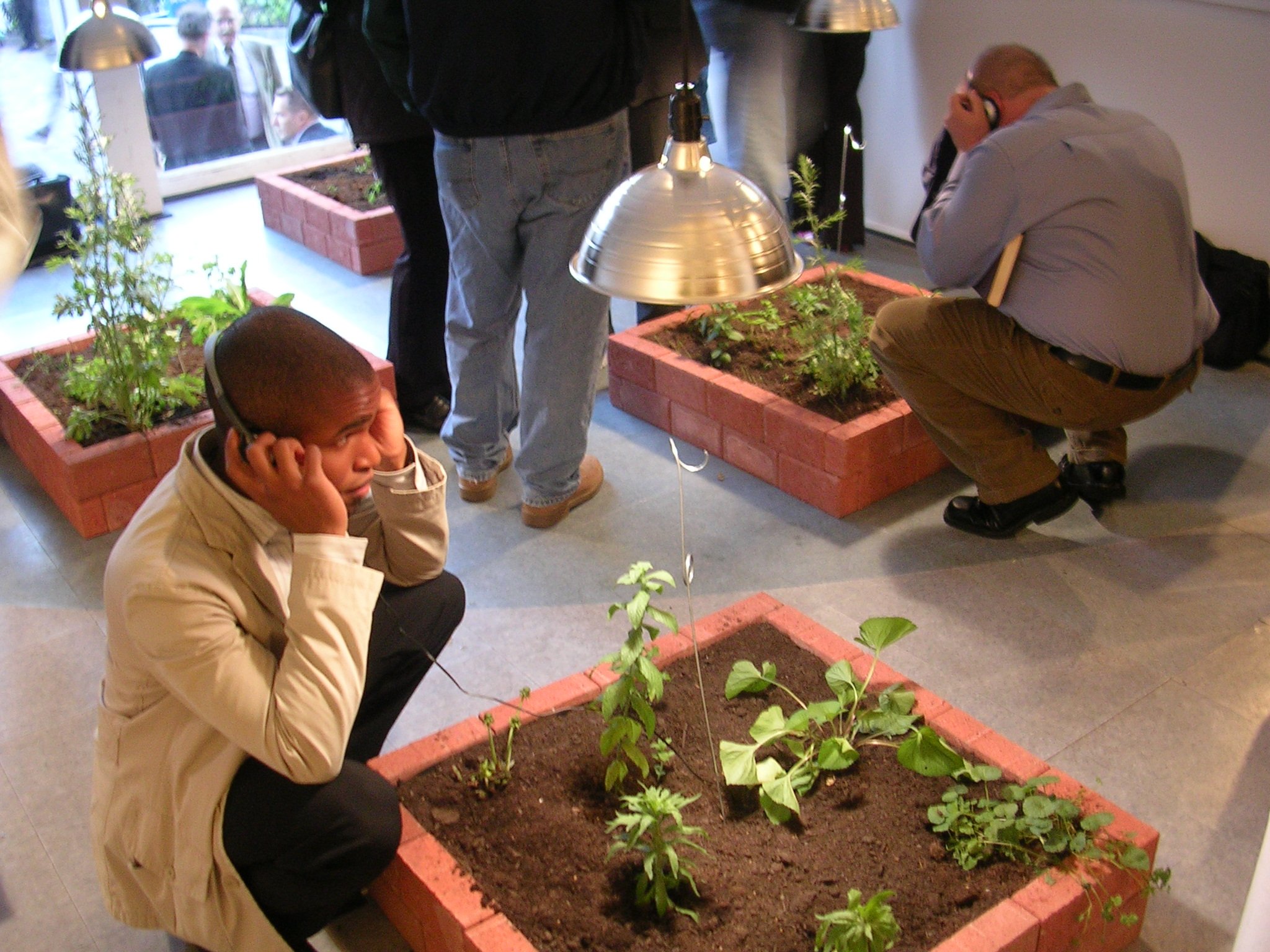Sifting the Inner Belt
都市を篩にかけたとき
OVERVIEW
TIME
2004 − 2005
VENUE
Boston Center for the Arts, Berkeley Street Community Garden (Boston MA. USA)
ボストン芸術センター, バークレー・コミュニティ・ガーデン (米国マサチューセッツ州ボストン市)
ROLE
Lead Artist/Community Organizer
リード アーティスト/コミュニティオルガナイザー
COLLABORATORS
Jeremy Chan Peng Chu (Artist), Catherine D’lgnazio (Artist/Scholar), William H.Ho (Urban Planner), Jeremy Chi-Ming Liu (Urban Planner), Natalie Loveless (Artist/Scholar), Kim Szeto, Andi Sutton (Artist)
KEYWORDS
Community revitalization, Oral history, オーラルヒストリー, Social Implementation, 社会実装, 地域活性, Immigration, Urban Renewal, 都市再生, Community Garden, コミュニティガーデン, Diversity, 多様性
STORY
To sift: To make a close examination of all the parts of something to find something or to separate what is useful from what is not
Sifting the Inner Belt was a year-long experimental research and participatory project that closely observed and examined i.e. sift, Boston’s South End neighborhood, with an emphasis on creating emotional, conceptual, and physical bridges between the Boston Center for the Arts (BCA) and the Berkeley Community Garden (BCG).
With the collaboration of artists, activists, and community residents, the project was constructed through a generative process involving dialogue and community engagement. Its culmination took place at the BCA including a series of performance events, site-specific installations, a display of final and in-progress research, and multifaceted social experiments.
-
Background
The term “Inner Belt” refers to the ill-conceived and never completed highway project from 1948-1971 that would have created an inner beltway highway around downtown Boston and between the South End and Lower Roxbury. Perhaps the most significant Urban Renewal project in Boston’s history, the Inner Belt and associated projects, resulted in thousands of families displaced, millions of dollars of land takings, and a legacy of “renewal” through displacement that still exists today. The term “renewal” lost its way in the 60’s and 70’s in the U.S, and so much of the urban “renewal” actually destroyed thriving, functional communities. In a way, Sifting the Inner Belt was a social and creative approach to renewing “urban renewal.”Because of the failure of the Inner Belt project and undergoing significant changes due to urban renewal efforts, the history of the Berkeley Street Community Garden began in the 1980s, as a way to help residents reclaim their community and improve their quality of life.
To sift: ふるいにかける
都市を篩(ふるい)にかけたとき (Sifting the Inner Belt)」は、都心の高級化の影響を受けたボストン市内にあるサウスエンド地区で、1年間限定で実施した参加型アート・リサーチプロジェクトでした。特に、地域に根ざした文化施設として知られるボストン芸術センターと多くの移民コミュニティが利用するバークレー・コミュニティ・ガーデンの関係性を調査しながら、感情的、概念的、物理的な観点から地域の課題・様相を探求する実験的なプロジェクトでした。
アーティスト、アクティビスト、地域住民の方々との協働を経て、対話やコミュニティの参加を通じた多面的な社会実験やパフォーマンスベースのプロジェクトを行い、ボストン芸術センターでの活動発表・展示を開催し、プロジェクトは終了しました。活動の一環であったコミュニティガーデンから発想したアートプロジェクト「苦瓜推進協議会」は、このプロジェクトを機にスタートしました。
-
背景
プロジェクトタイトルにある「Inner Belt」は、1948年から1971年にボストンのダウンタウン周辺およびサウスエンド(South End)とロウワー・ロクスバリー (Lower Roxbury) の間に内環状 (=inner belt) 高速道路の建設が計画が背景にあります。市民運動の結果、建設計画が中止となり、実現しなかったプロジェクトとして知られています。 おそらくボストンの歴史上最も重要な都市再開発プロジェクト(Urban Renewal)の一つでもあり、数千ともなる家族が追い出され、数百万ドルの土地収用が行われるなど、今もなお続く「追放による再生」という遺産を残しました。アメリカの都市「再生(Renewal)」の歴史を振り返ると、実際には繁栄していた機能的なコミュニティ(その文化)を破壊してしたケースが多くありました。「再生」という動詞は、しばしば「霊的に新しくする」と定義される「新しい基盤で再設立する」または「新しいものまたは同様のものを作る」に基づいて、再び取り戻すことができます。Sifting the Inner Beltは、「都市再開発」の手法や考え方を再生/更新するための社会的で創造的なアプローチで探求しました。
本プロジェクトの失敗と都市再生による大きな変化によって、バークレー・ストリート・コミュニティ・ガーデンの歴史は1980年代に始まり、住民が自分たちのコミュニティを取り戻し、生活の質を向上させるための手段としてスタートしました。
CREDIT
FUNDED BY
LEF Foundation, Weekly Dig (Media Sponsor)
SPECIAL THANKS
Laura Donaldson
PHOTO COURTESY OF
Sifting the Inner Belt
For more details about the credit, please contact me.













